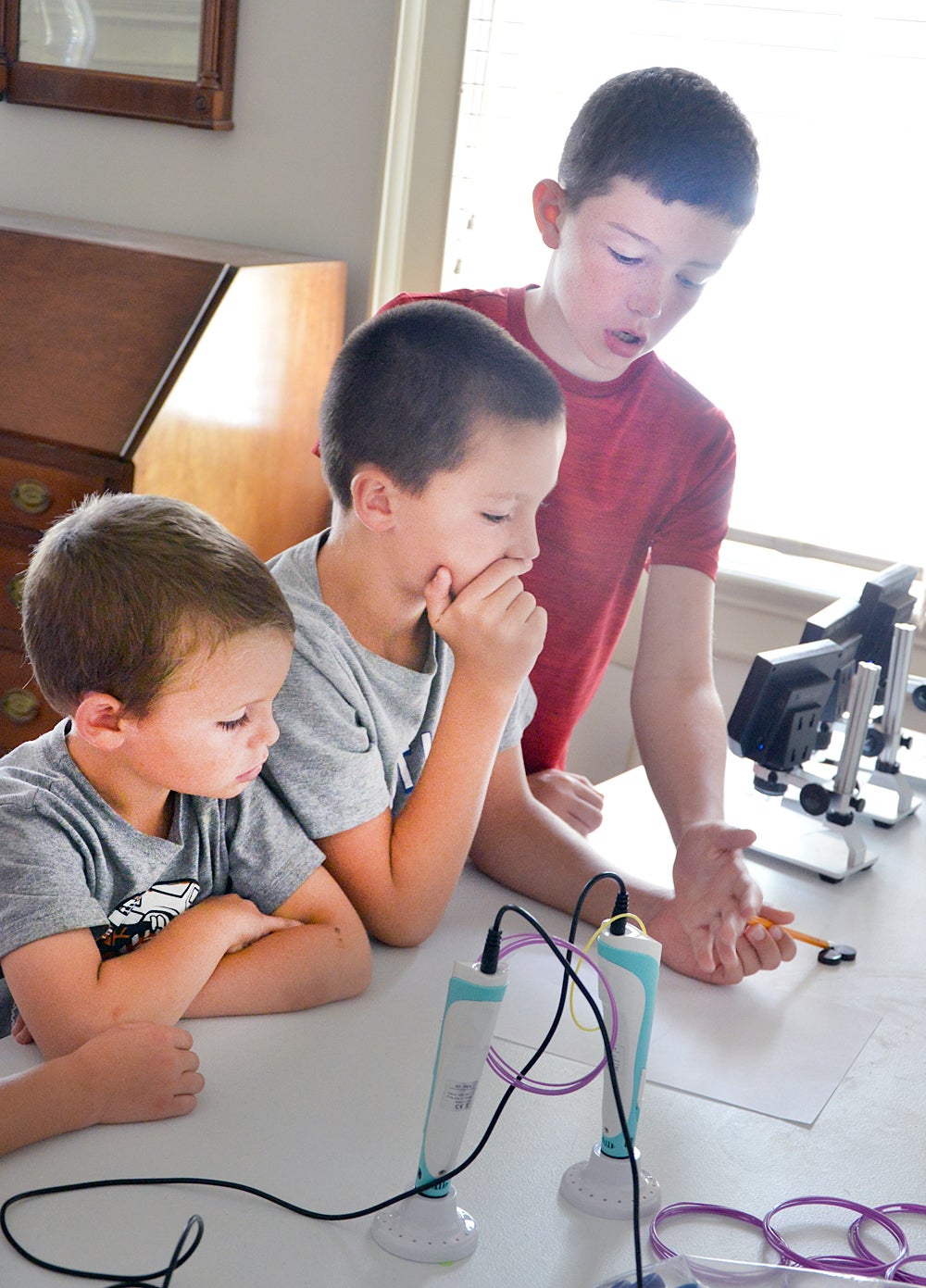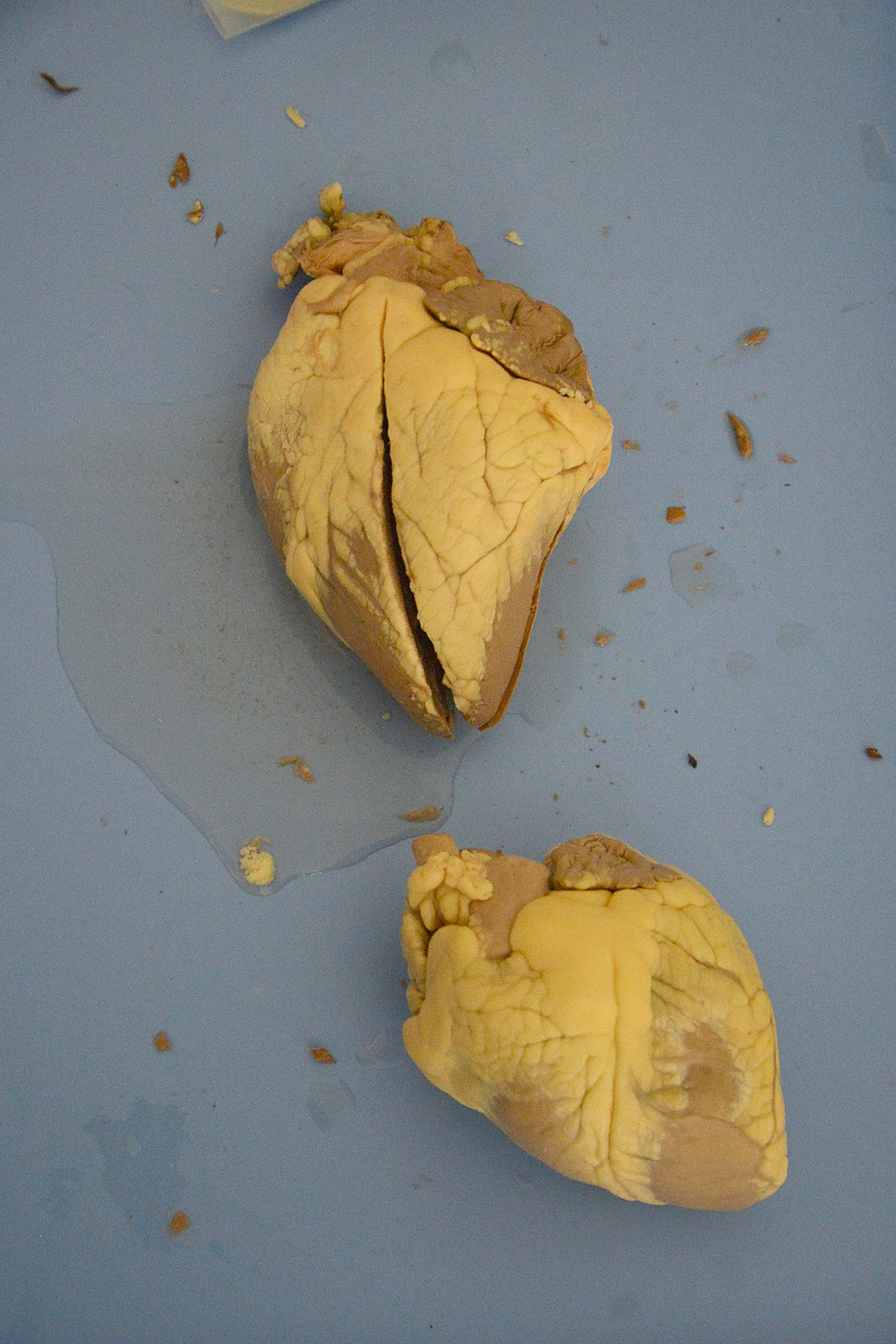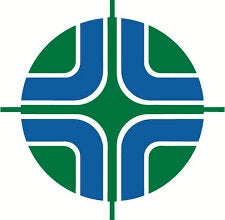Day camp kids learn how to fix a broken heart
Published 7:03 pm Friday, July 19, 2019
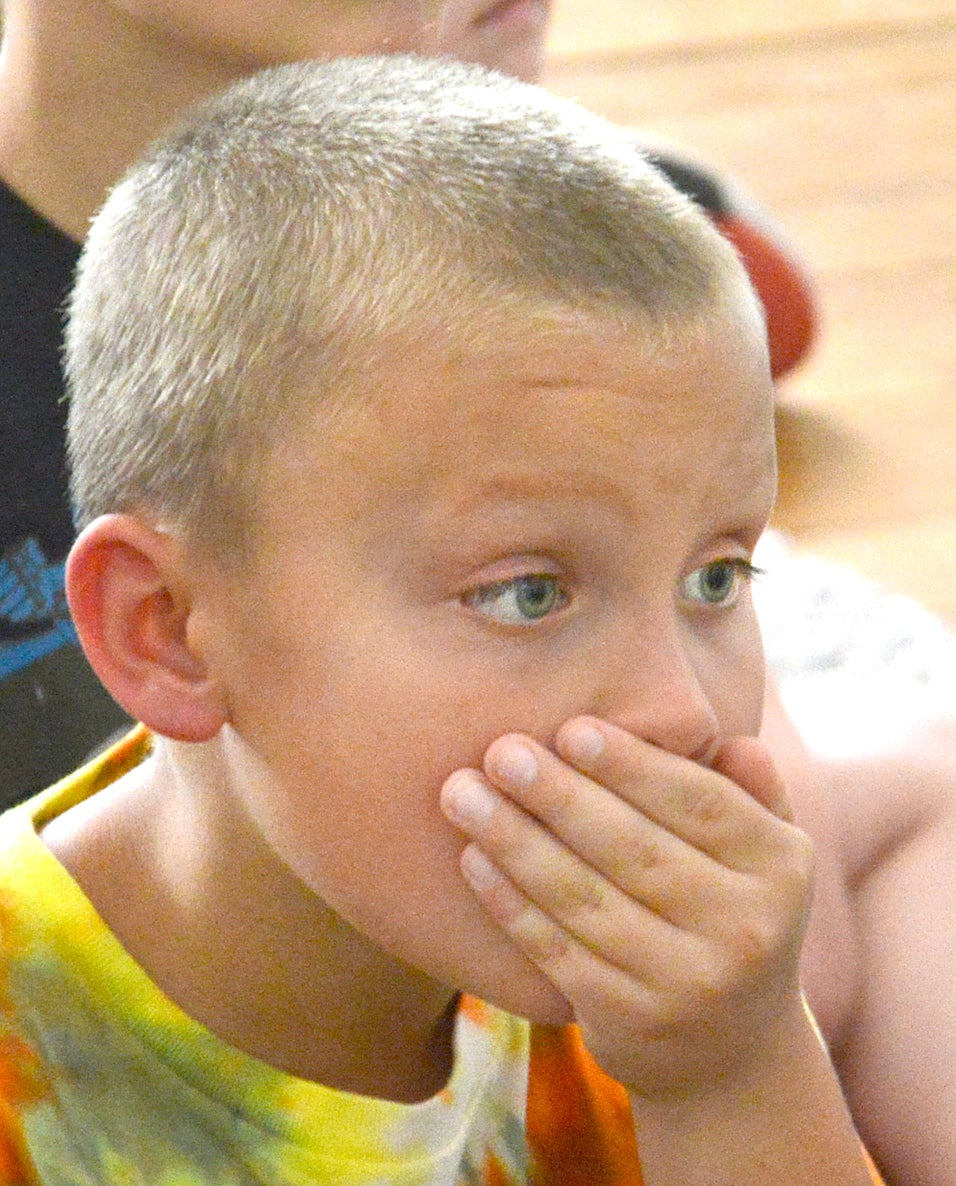
- Colton Hughes is surprised when he finds out the hearts on display were real sheep hearts. (Photo by Robin Hart)
At the site of the world’s first known successful abdominal surgery 210 years ago, local kids learned a few things about modern, cutting-edge heart surgeries and even devised solutions to fix a heart problem.
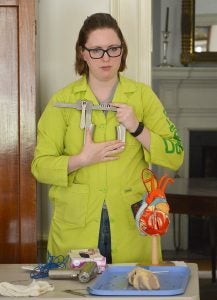
Amanda Barnett, offsite master educator with the Kentucky Science Center, talks about how the rib spreader is used during open heart surgery. (Photo by Robin Hart)
On Friday, students attending the Salvation Army summer day camp sat on the floor beneath a portrait of Dr. Ephraim McDowell at the McDowell House Museum and watched as Amanda Barnett displayed tools used in today’s heart surgeries and showed them real hearts from sheep. They’re similar to shape and size of human hearts, she told the students.
Barnett works with the Kentucky Science Center in Louisville and is the offsite master educator. She coordinates and teaches science programs all over Kentucky, she said.
Being at the McDowell House, Barnett said, “We’re getting to tie what we do at the science center with this amazing historic site. … We’re tying modern science with the first successful abdominal surgery. It’s a cool way to tie it with the students who may not realize how much it (medicine) has progressed.
Lauren Clontz, director of the McDowell House Museum said this summer’s five-part program is sponsored by the Lexington Medical Society Foundation. “It’s trying to get kids to think about medicine and science.”
“We’re taking the time from Dr. McDowell and medicine in the early days with lots of home remedies, into modern, cutting edge science,” Clontz said.
The Kentucky Historical Society gave a class on pioneer medicine. The Cumberland Gap National Park followed up and explained how some of the things that could go wrong with pioneer medicine 200 years ago, “like poison ivy and bears,” Clontz said.
The Kentucky Science Center is presenting a three-part series on heart health and heart medicine and surgery, she said. And they’re working to “get kids to think like scientists. They’re getting a challenge to fix a heart problem, then make models to try to fix that,” Clontz said.
On Friday, the students were divided into groups and were tasked with finding a solution to the heart problem of clogged arteries. Once they developed their own blueprint of how to solve the problem, students then built models to illustrate their solution, Barnett said. Microscopes were set up for them to see artery tissue; a container full of supplies such as cardboard, tissue paper and pipe cleaners was available for the young “heart engineers” to build their model. There were even 3-D pens for students to create a special piece for their model if they couldn’t find something to use in the box of supplies.
“The ideas they come up with is astounding,” Barnett said. “They have just great imaginations.”
- Charlotte Frink looks at a slide through a digital microscope, as the other members of her group devise a plan to unclog arteries. (Photo by Robin Hart)
- From left, Harper Hughes, Haven Mills and Clayton Bertram work together to develop a blueprint of a model that could be used to help a heart with clogged arteries. (Photo by Robin Hart)
- Two sheep hearts were on display at McDowell House Museum, for students who were attending a class on heart health on Friday. (Photo by Robin Hart)



